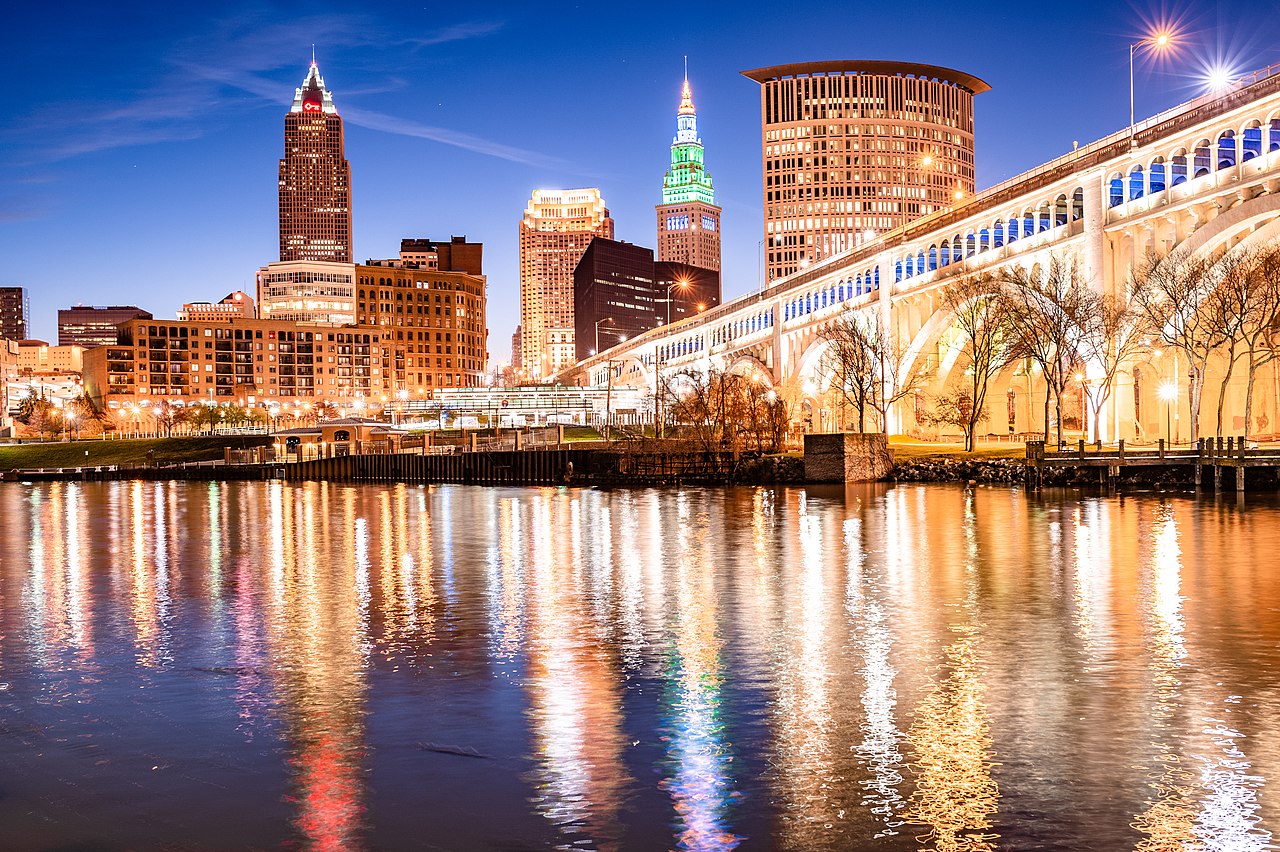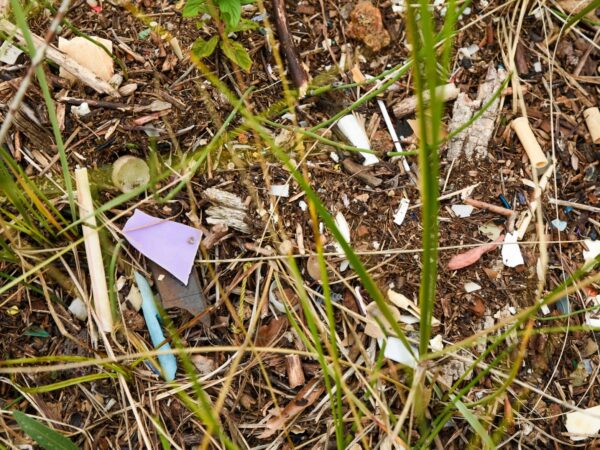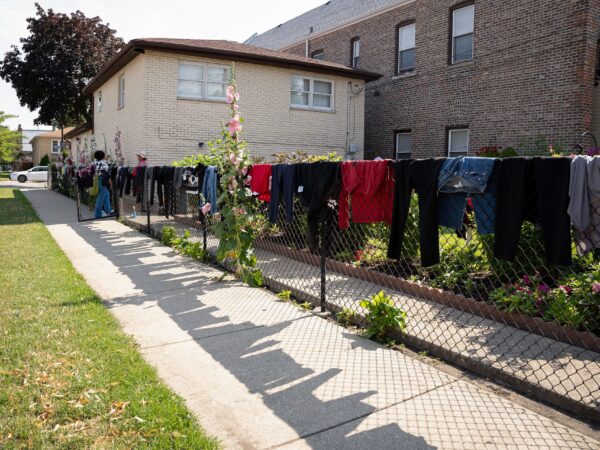
Great Lakes Moment is a monthly column written by Great Lakes Now Contributor John Hartig. Publishing the author’s views and assertions does not represent endorsement by Great Lakes Now or Detroit Public Television.
Fifty years ago the Cuyahoga River captured national attention and was seared into American consciousness for catching on fire.
On that infamous day, as it had done for thousands of years, water was flowing back and forth following the wide bends in the lower river on its journey to the river mouth and Lake Erie. But on June 22, 1969, wooden debris had impinged on the pilings of two wooden railroad trestles. Water flow in the river was slow, making it more difficult for debris to be flushed out.
The 1960s were also a time of peak oil pollution in the Cuyahoga River. As evidence of this pollution, the International Joint Commission reported that during dredging of Cleveland Harbor in 1966-1967, an estimated 17,600 tons of oil and grease were present in 660,000 tons of dry solids removed. Time Magazine in 1969 had this to say about the pollution of the Cuyahoga River:
No Visible Life. Some river! Chocolate-brown, oily, bubbling with subsurface gases, it oozes rather than flows. “Anyone who falls into the Cuyahoga does not drown,” Cleveland’s citizens joke grimly. “He decays.” The Federal Water Pollution Control Administration dryly notes: “The lower Cuyahoga has no visible life, not even low forms such as leeches and sludge worms that usually thrive on wastes.” It is also—literally —a fire hazard.
The combination of wooden debris, oil and other petroleum products was a disaster waiting to happen. It is believed that sparks from a passing train ignited an oil slick and associated wooden debris. Flames climbed as high as five stories before a fireboat brought them under control.
The fireboat battled the blaze on the water while units from three fire battalions worked the fire from shore. The blaze lasted just 30 minutes, but it did approximately $50,000 in damage to two railroad bridges. This short-lived fire was out before the local press reached the scene to photograph the blaze.
But 1969 was not the first time the Cuyahoga River caught on fire. Fires occurred on the Cuyahoga River in 1868, 1883, 1887, 1912, 1922, 1936, 1941, 1948, and in 1952. The largest fire occurred in 1952 when a two-inch thick oil slick burned on the river, causing over $1.5 million of damage to boats and a riverfront office building.
The 1969 Cuyahoga River and other pollution crises like the 1969 Santa Barbara oil spill helped awaken the nation to widespread environmental degradation. Time magazine’s August 1, 1969 issue was one of the most widely read issues at a time when access to news was more limited than it is today. It was the week after Apollo 11 returned from its mission to the moon and the magazine featured the flight. It was also the first issue with a new environment section, with the Cuyahoga River as its focus. The story also featured Carl Stokes, the first African-American mayor of a large city.
The 1969 Cuyahoga River fire and its national coverage helped awaken the nation to widespread environmental degradation. Clearly, many rivers were severely polluted during the 1960s, including the Buffalo River in New York, the Rouge River in southeastern Michigan, the Grand Calumet River in Indiana, the Fox River in Wisconsin, and the Chicago River in Illinois.
However, what set the Cuyahoga River apart from other degraded rivers was that it caught on fire just as the national media began to cover the environment as a serious issue and just as there was growing national public recognition of the urgent need to protect the environment. Indeed, the Cuyahoga fire and other environmental disasters became national symbols of industrial indifference and the weakness of public regulation.
The fire and public outcry over other endangered waterways helped lead to the passage of both the 1970 National Environmental Policy Act, the 1972 Clean Water Act, the 1972 U.S.-Canada Great Lakes Water Quality Agreement, and the 1973 Endangered Species Act. The environmental movement needed a poster child and the burning Cuyahoga River became it.
Clearly, much has been accomplished through regulating pollutant discharges and pollution prevention since the 1969 Cuyahoga fire. For example, the Northeast Ohio Regional Sewer District has spent over $2 billion on wastewater treatment facilities and collection system improvements since 1972, as well as more than $850 million reducing combined sewer overflows by nearly 50 percent. It has also implemented stormwater management projects and stream restorations in the watershed.
The district is now implementing its Combined Sewer Overflow Long-Term Control Plan over a 25-year period at a cost of $3 billion. The City of Akron is also implementing a Long-Term Combined Sewer Overflow Control Plan at a cost of $890 million. Between 2010 and 2017, more than $9 million of habitat rehabilitation and enhancement were completed in the Cuyahoga River, including rehabilitation of wetlands and shoreline habitat, control of invasive species, and enhancement of riparian habitats.
Pollution prevention and control and habitat rehabilitation have led to a surprising ecological revival in recent years. In 1969, when the Cuyahoga River last caught fire, there were few, if any, fish in the lower river. Today you can find 70 species of fish, including many pollution-sensitive species like smallmouth bass. Pollution-sensitive benthic macroinvertebrates are present in most reaches, and peregrine falcons, bald eagles, and osprey have returned to the banks.
Recreational use of the river for fishing, kayaking, canoeing, and other outdoor sports has grown, and increases every year, making the Cuyahoga a recreational destination. New outfitters and river-guide services have grown along with it. Once the last dams in the middle and lower river are removed, the river will become even more of an economic driver for Northeast Ohio.
The cleanup of the Cuyahoga River has also led to the transformation of the Cleveland Flats from an industrial wasteland into a community where nature, commerce, and industry live together. Since 2012, the Flats has seen $750 million (U.S.) in economic development, with $270 million (U.S.) of new developments in the planning phase. Melinda Gigante, director of the nonprofit neighborhood organization called Flats Forward that is dedicated to the revitalization of the Flats, states:
Without the cleanup of the Cuyahoga River, the revitalization of the Flats would not have been conceivable. The revival of the Cuyahoga River has been a major catalyst for this revitalization.
Featured Image: The Flats on the bank of the Cuyahoga River in Cleveland, Ohio, Photo by Erik Drost via wikimedia cc 2.0
1 Comment
-
love it




